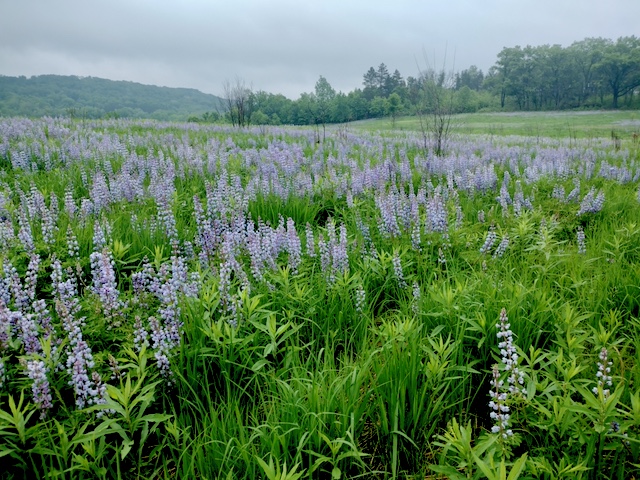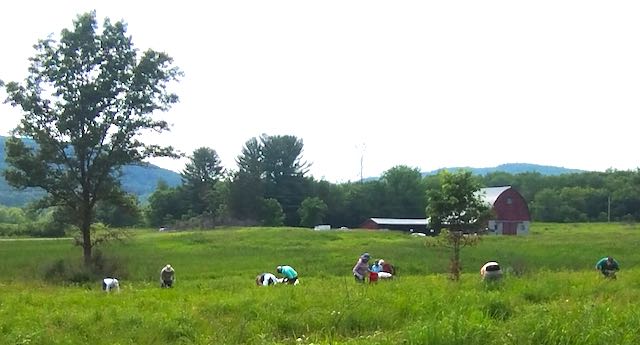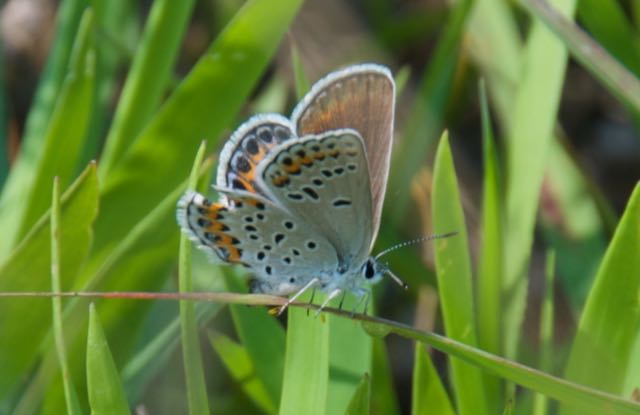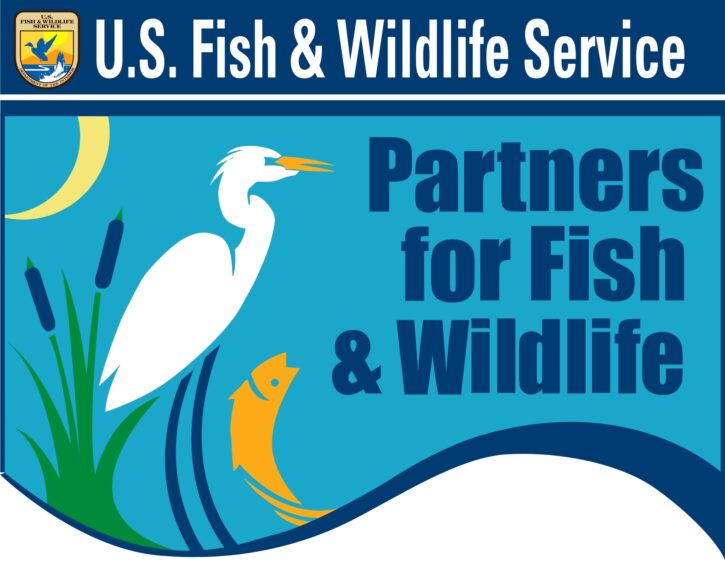Turning Flowers into Butterflies (updated)

Sundial Lupine
Three weeks ago, the Wisconsin prairies were awash in sundial lupine, the wild lupine that adorns our sand counties. The early spring and ample rain that blessed our southern counties resulted in a bumper crop of these gorgeous blossoms.
While those blooms have faded, the seeds the produced are ripening. That seed will be put to good use restoring lupine populations elsewhere in the Badger State.

Volunteers from the USFWS Partners in Fish and Wildlife Program will gather at a private landowner’s property located on 28th Avenue near Red Granite, WI (GPS coordinates 44.09928 -89.06689) on Monday, June 24th from 9:00 AM – 2:00 PM to harvest that wild lupine seed.
The final seed collecting event will be held at WI DNR Greenwood Wildlife Area on County Highway H, near Hancock, WI (GPS coordinates 44.11174 -89.48892). This event will happen on Tuesday, June 24th and Wednesday, June 25th, both days from 9:00 AM – 2:00 PM.
After processing the seed will be given to private landowners and public land managers for planting across central Wisconsin. Those new fields of lupine will provide the future home for federally endangered Karner blue butterflies.
The range of these rare butterflies extends from Albany, New York across the lower Great Lakes states to Wisconsin. Populations of these butterflies crashed as the sundial lupine, upon which they depend, disappeared beneath the plow.

Karner blue butterflies (Lycaeides melissa samuelis) do not migrate like their better known cousins the monarch butterflies. These more diminutive butterflies typically spend their entire lives within an area of a few hundred yards. This means roads, agriculture and other human development easily chops up their world, creating tiny islands from which it is difficult or impossible to spread.
Karner Blue Lifecycle
There are two generations of Karner blue butterflies each year. The first generation emerge in May becoming adults that take flight in early to mid June. These adults lay their eggs on leaves and stems of wild lupine plants. Like those better known orange pollinators, Karner blues lay their eggs on a single obligate host plant called sundial lupine whose scientific name is Lupinus perennis.
The eggs from those “first flight” Karner blues develop quickly, their tiny caterpillars feed exclusively on sundial lupine plants for 3-4 weeks. After a subsequent 7-11 day pupal stage, the second generation of adult butterflies emerge. Adult butterflies, both first and second generation, live only 5-7 days during which time they mate and the females lay their eggs. First flight adults lay the second generations eggs in late July through mid August. That generation of Karner blue butterfly eggs overwinter on their lupine host plant until next spring.
How You Can Help
This year’s goal is to collect 73 pounds of wild lupine seed. US Fish and Wildlife Service through their Partners in Fish & Wildlife Program will process and distribute that harvested seed to landowners throughout Wisconsin sand counties.
The Riverland Conservancy Sip and Seed Stewardship Event is the third of seven scheduled for 2024. The event if free but registration is required. For more information email Brendan Woodall.

